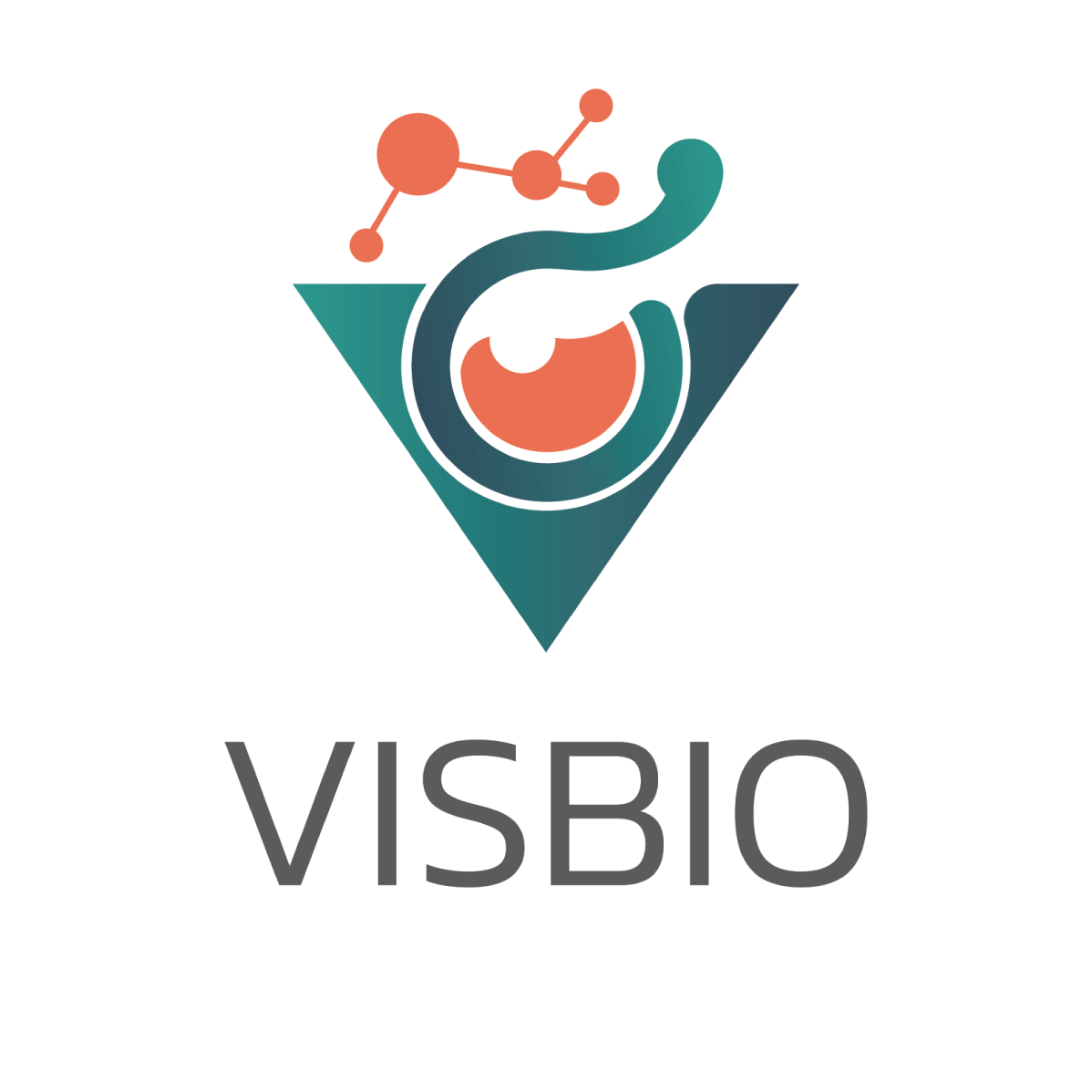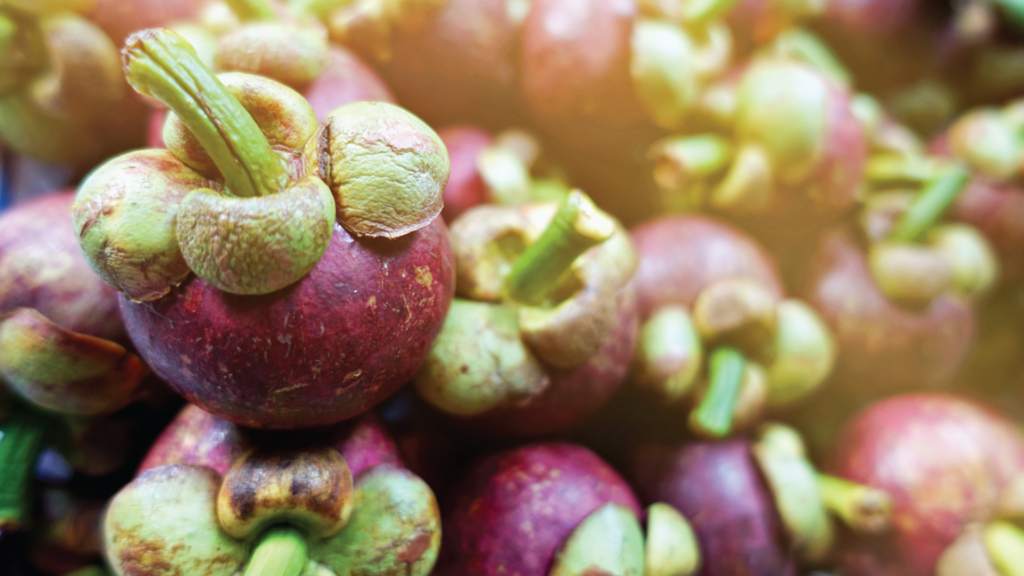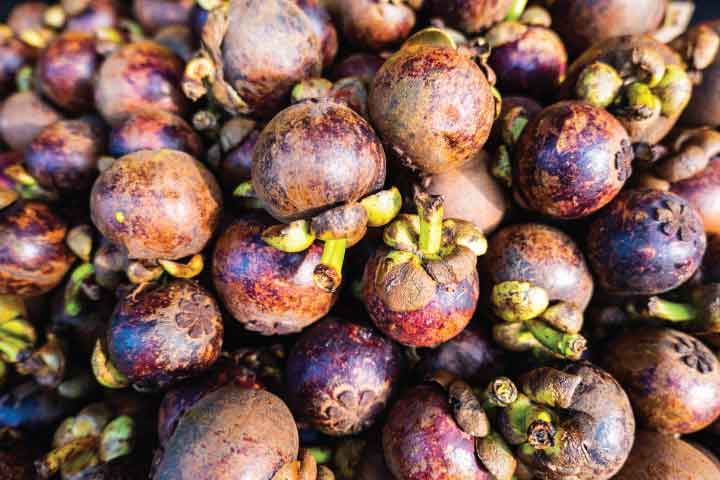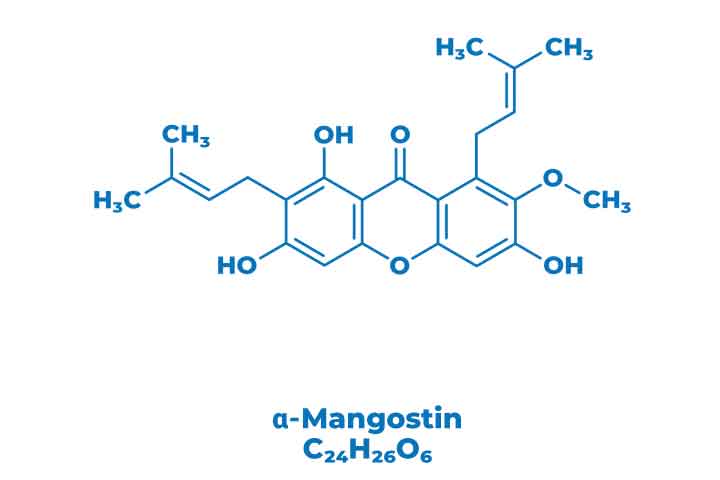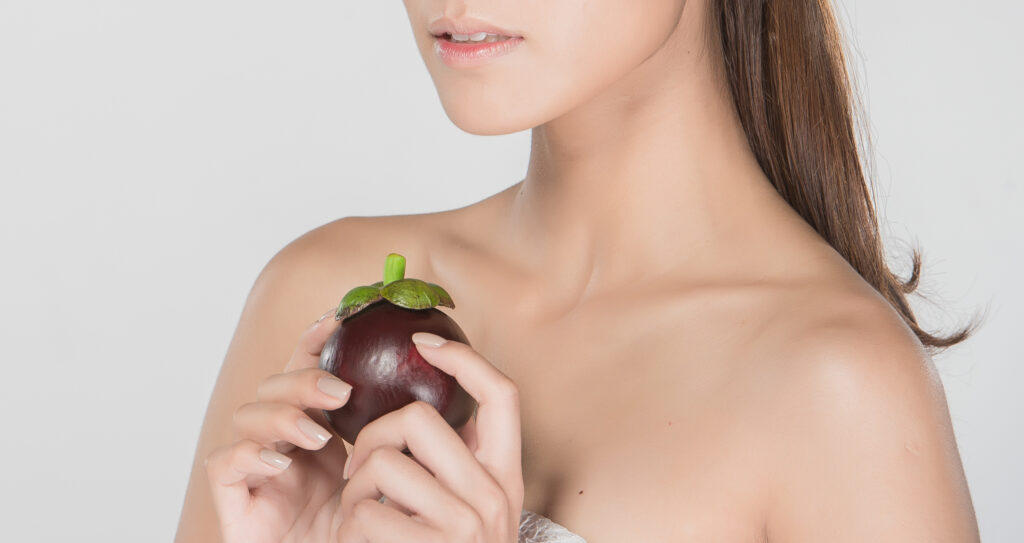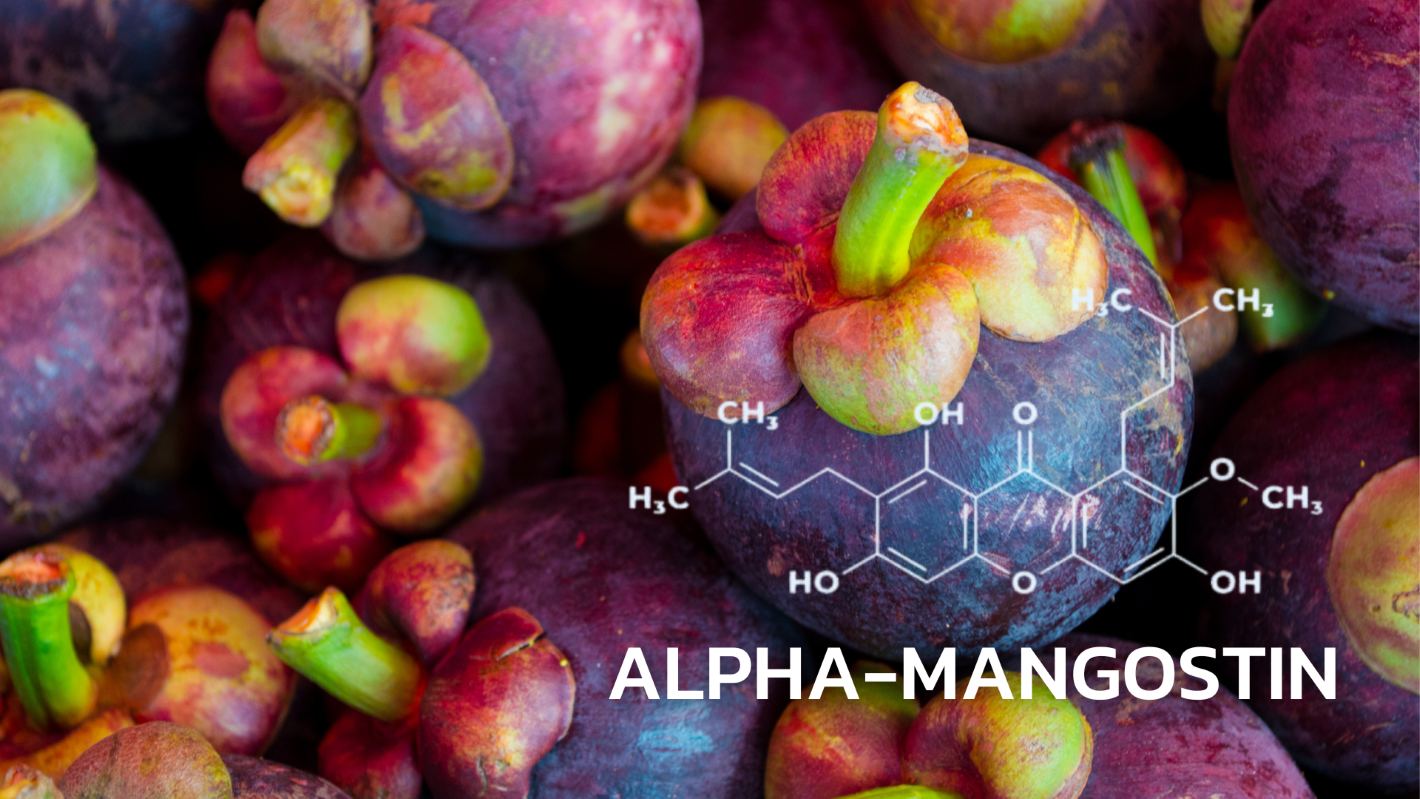
Service Information for Alpha-Mangostin Testing in Products
VISBIO offers a service to test and analyze the levels of the biomarker compound, alpha-mangostin, in various health and beauty products. This compound is extracted from mangosteen peels and contains key components of the xanthone group, including Mangostione, α-mangostin, β-mangostin, γmangostin, Gartinin, and Garcinone E. Additionally, there are also tannins present in the extract.
Extracted from mangosteen peels, these compounds possess antioxidant properties, help combat viruses, bacteria, fungi, inflammation, and promote wound healing. Among these, alpha-mangostin is particularly well-studied and widely used. It holds various pharmacological properties such as antioxidation, antiviral, antifungal, inhibition of acne-causing bacteria (P.acnes, Propionibacterium acnes), immune system enhancement, and importantly, anti-inflammatory effects. It achieves the latter by inhibiting the release of inflammatory mediators.
Currently, extracts from mangosteen peels are extensively utilized in the health and beauty industry. They are employed in the development of numerous products such as skin care, facial and body cleansers, oral wound healing gels, acne treatments, diabetic foot ulcer treatments, and various dermatological medications including eczema treatment.
What's Garcinia mangostana?
Garcinia mangostana” or “Mangosteen” is a tropical fruit that is popularly grown in coastal areas of Thailand, Myanmar, Cambodia, and Vietnam. In Thailand, it is commonly cultivated in the southern and eastern regions. Mangosteen is a delicious fruit with a sweet and slightly sour flavor. It is characterized by its outer rind, which has segments resembling a crown at the top, earning it the nickname “Queen of Fruits.”
Mangosteen is a nutritionally valuable fruit due to its rich content of vitamins and minerals. Its flesh is abundant in vitamins such as vitamin C and vitamin E, as well as minerals like calcium, phosphorus, and magnesium. Additionally, the fruit’s various components, such as its bitter rind, possess numerous medicinal properties. These properties include antioxidant effects and wound-healing properties.
Health Benefits of Mangosteen (Garcinia mangostana)
Mangosteen has been traditionally used for its medicinal properties in various Thai herbal remedies. It has been employed to treat different ailments, including:
- Roots: The roots are known to regulate menstrual cycles and help with blood circulation problems.
- Leaves and Flowers: These parts are utilized to improve blood circulation.
- Tree Bark: The bark is used for wound cleansing and treatment.
- Latex: The latex from the fruit is used for wound healing and treating diarrhea, stomach upset, and inflammation.
- Fruit Rind: The rind of the fruit is used to alleviate diarrhea, stomach issues, and inflammation. It’s also used to treat skin conditions such as acne and wounds, aiding in faster wound healing.
Alpha-Mangostin
Alpha-mangostin is an extract derived from the mangosteen peel, comprising essential compounds in the xanthone group, including Mangostione, α-mangostin, β-mangostin, γ-mangostin, Gartinin, and Garcinone E. Additionally, it contains Tannins. Extracts from mangosteen peel possess properties such as antioxidant, antiviral, antibacterial, antifungal, anti-inflammatory, and wound healing effects.
The most extensively studied and commonly utilized active compound found in mangosteen peel extracts is Alpha-mangostin (α-mangostin), with the molecular formula C24H26O6. It is frequently used as a standard for controlling the quality of mangosteen peel extract. Alpha-mangostin exhibits numerous pharmacological properties, including antioxidative, antiviral, antifungal effects, inhibition of the bacteria that causes acne (P. acnes, Propionibacterium acnes), enhancement of the body’s immune
response, and notably, anti-inflammatory effects. It achieves this by inhibiting the release of inflammatory mediators such as Nitric oxide (NO), Prostaglandin E2 (PGE2), Tumor necrosis factor-α (TNF-α), and Interleukin (IL)-4.
Mangosteen Peel Extract in the Cosmetics Industry
Mangosteen peel extract can be used to develop a variety of cosmetic products due to its properties such as antioxidant, wound healing, and inhibition of acne-causing bacteria. It effectively reduces inflammation associated with acne. Examples include skin nourishing products, facial and body cleansers such as bar soaps, liquid soaps, facial cleansers, foaming facial cleansers, shower gels, and bath gels, which aid in reducing acne-causing bacteria and minimizing scars.
Mangosteen Peel Extract in the Pharmaceutical Industry
Mangosteen peel extracts possess antioxidant, anti-inflammatory, and antifungal properties, as well as the ability to inhibit the growth of bacteria that cause abscesses. This makes it suitable for treating pustules and abscesses, promoting faster wound healing. As a result, a range of pharmaceutical products has been developed, incorporating mangosteen peel extracts, such as mouth ulcer treatment gels, acne creams, creams for diabetic foot ulcers, and dermatological treatments for conditions like eczema.
Example of Reporting Results from Alpha-mangostin Analysis Using HPLC Technique
From the chromatogram, the chromatogram of Alpha-mangostin is shown, which allows the calculation of the quantity of Alpha-mangostin in the sample area under the graph, by comparison with the standard substance.
Literature:
- ธิดารัตน์ จันทร์ดอน, มังคุด…ราชินีแห่งผลไม้, สํานักงานข้อมูลสมุนไพรคณะเภสัชศาสตร์, มหาวิทยาลัยมหิดล
- ภาคภูมิ พาณิชยูปการนันท์, ยาเจลรักษาแผลในช่องปากที่เตรียมจากสารสกัดเปลือกมังคุดที่มีสาร alpha-mangostin, สำนักวิจัยและพัฒนา มหาวิทยาลัยสงขลานครินทร์
- อุดม เจริญแสง และคณะ, การใช้ประโยชน์และสรรพคุณทางยาของมังคุด, กรมวิชาการเกษตร สำนักวิจัยและพัฒนาการเกษตร เขตที่ 8 จังหวัดสงขลา
- จันจิรา อินตรา อนุสรา รอตรักษา, การพัฒนาสบู่เหลวสมุนไพรต้านเชื้อแบคทีเรีย, โครงการพิเศษ คณะเภสัชศาสตร์ ม.มหิดล, 2542
- Chomnawang MT, Surassmo S, Nukoolkarn VS, Gritsanapan W. Effect of Garcinia mangostana on inflammation caused by Propionibacterium acnes. Fitoterapia. 2007 Sep;78(6):401-8. doi: 10.1016/j.fitote.2007.02.019. Epub 2007 Jun 2. PMID: 17644272.
- Pothitirat, Werayut & Gritsanapan, Wandee. (2008). HPLC Quantitative Analysis Method for the Determination of α-Mangostin in Mangosteen Fruit Rind Extract. Thai J Agricultural Sci. 42.
- Gutierrez-Orozco F, Chitchumroonchokchai C, Lesinski GB, Suksamrarn S, Failla ML. α-Mangostin: anti-inflammatory activity and metabolism by human cells. J Agric Food Chem. 2013 Apr 24;61(16):3891-900. doi: 10.1021/jf4004434. Epub 2013 Apr 11. PMID: 23578285; PMCID: PMC3793015.
